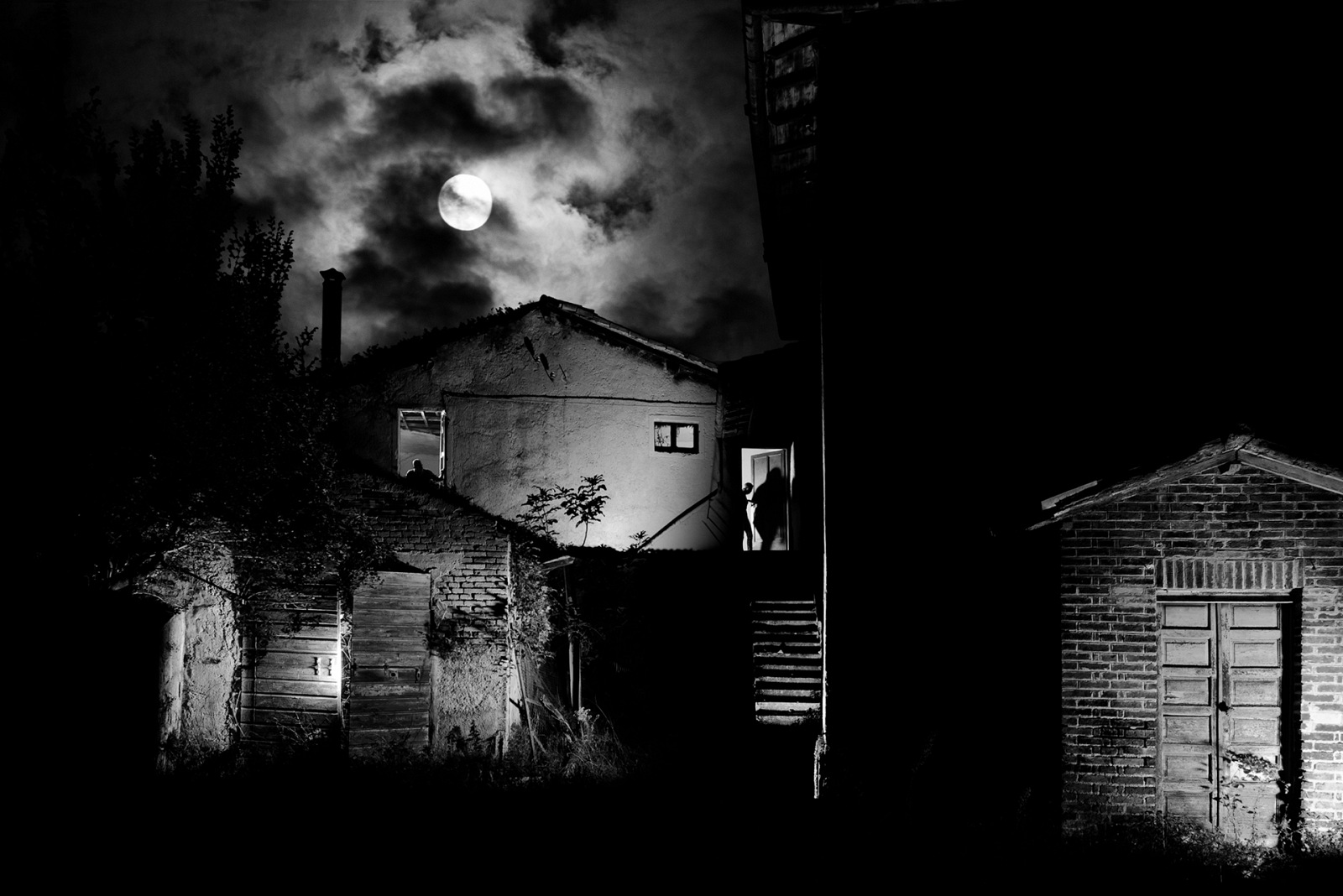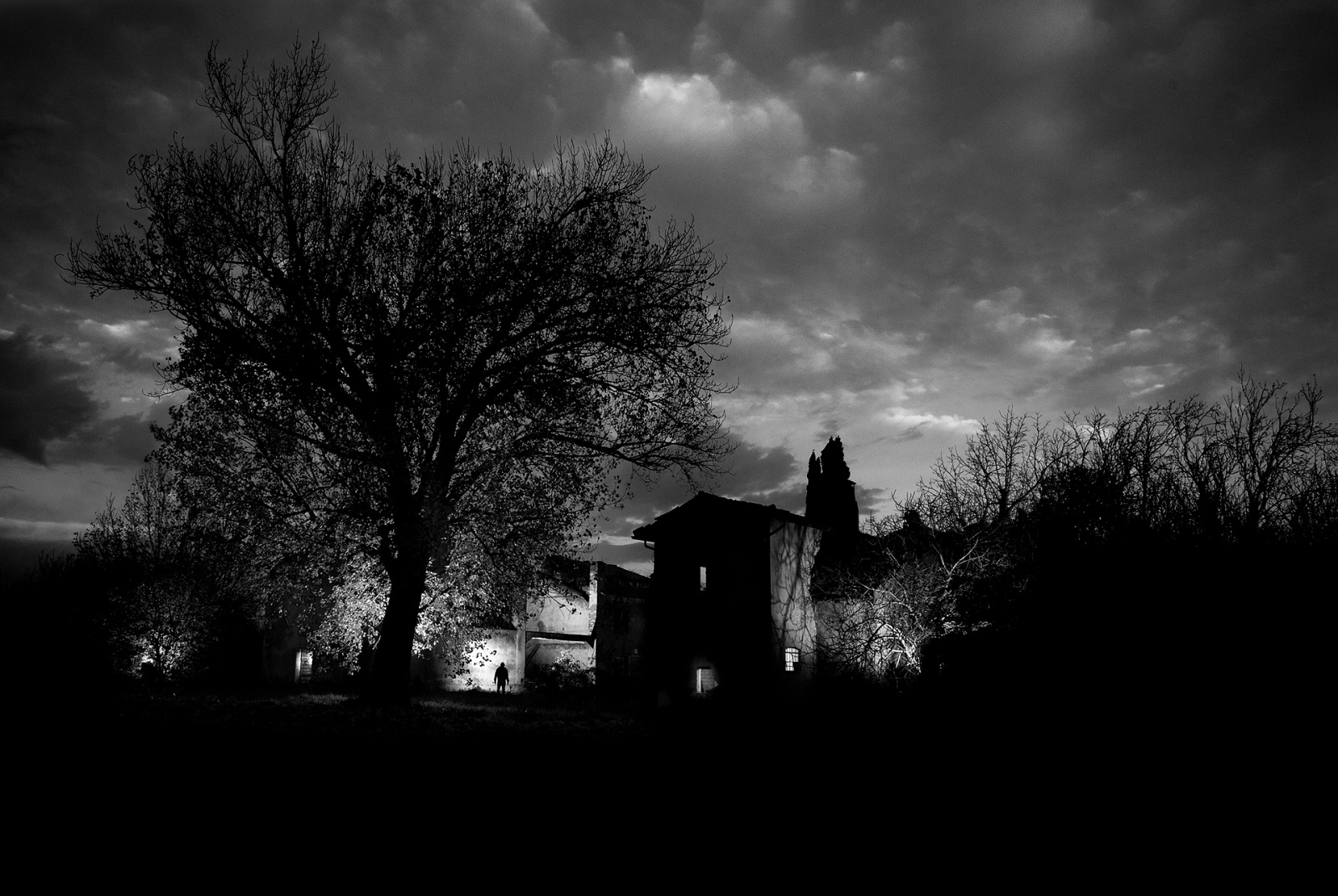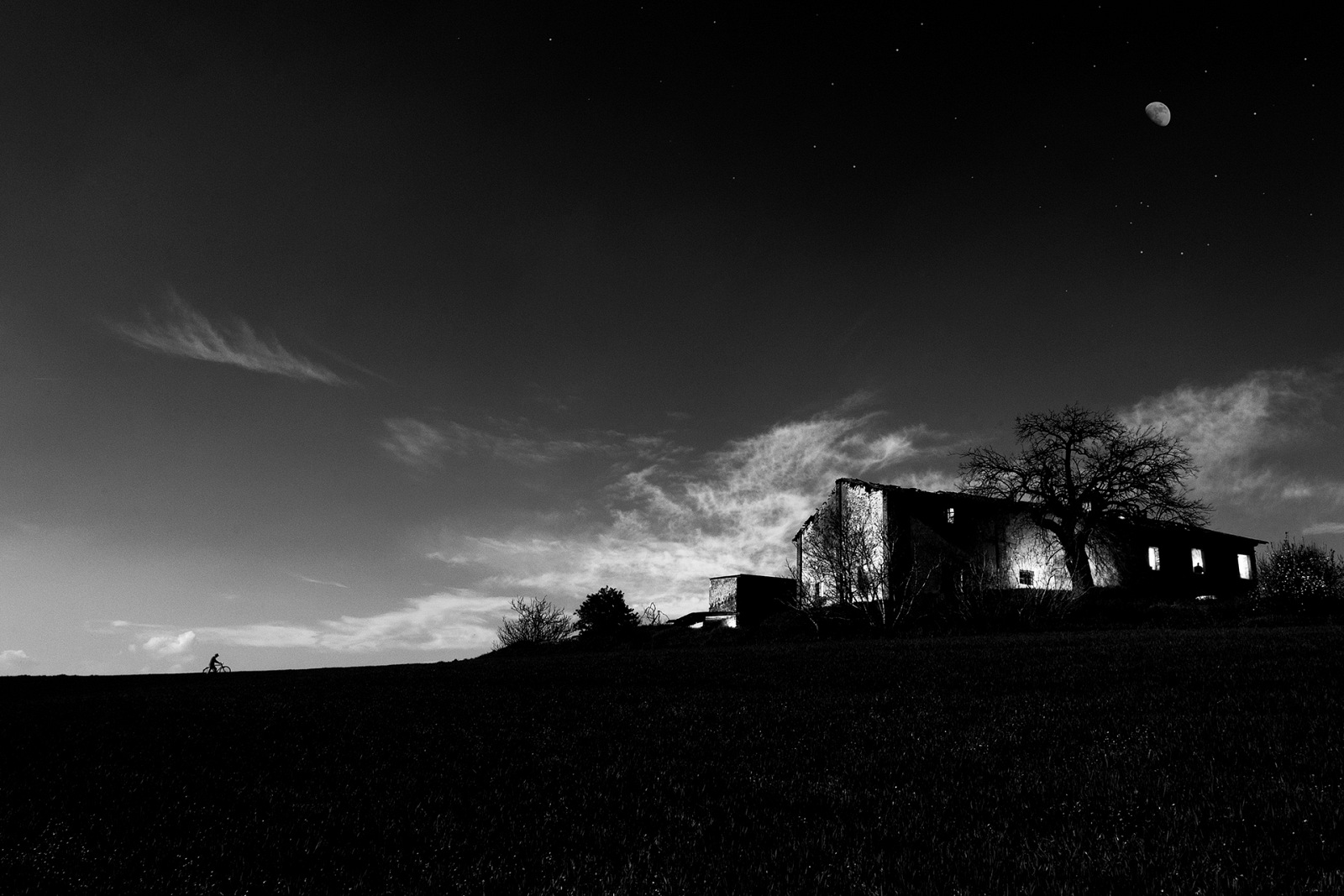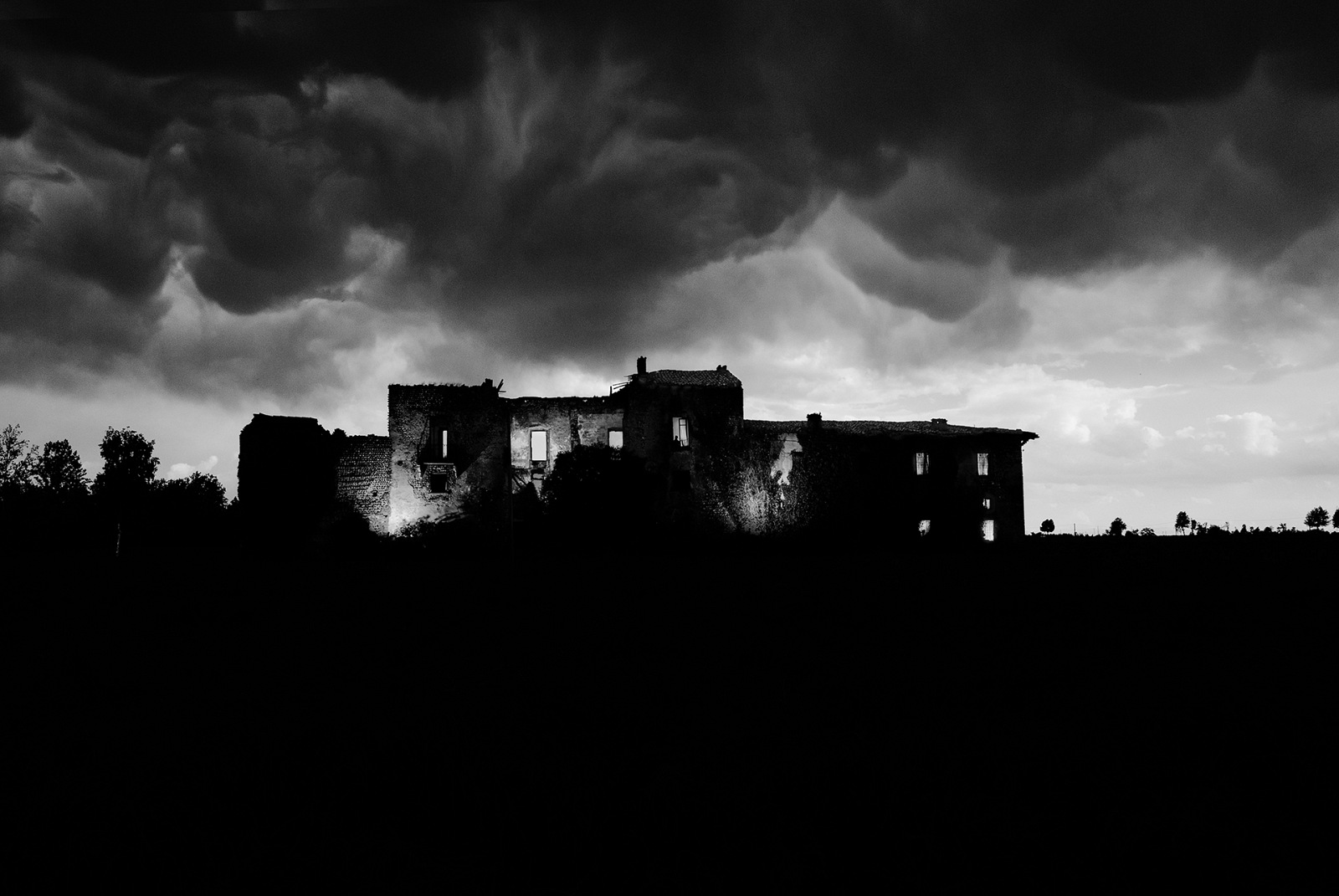luca broglia
the season of the shadows*
«[...] The stars remained fixed
each with its crystal cable
beamed to earth
each attached to the immense plow
furrowing our lives»
Lawrence Ferlinghetti**
The relationship between time and death is one of the cornerstones of Western philosophical speculation, but also one of the factors that most influence the production and the use of photographs. Behind the anxiety to secure something in an image, in Westerners has always been there, trying to stem the time and with it its most dreaded consequence: the end of life. The photograph, when it concerns human representation, tends to believe its own subjects
that slipping of sand in the hourglass can be arrested, crystallized in the image that freezes the moment. It can be kept intact enough to survive the reference from which it originated, thereby allowing the memory for future generations, if nourished ambitions of this kind.
The
image of the unnameable, in the words of Debray, is not, however, only eluded by photographs, which appear mildly soothing compared to human anxieties on existence. In more advanced stages, compared to its vernacular purpose, this vestal of terror mortis can come to claim even the assumption of a generative commitment. As a real anthropic mirror, a role that it is able to play on numerous occasions, the image can afford to reach the contemplation of the invisible through the visible.
«There are old houses situated in the countryside where I was born and grew up – affirms Luca Broglia talking about his work – which have remained uninhabited during the decades following the deaths of the last farmers who lived there. By now they have become ruins difficult to access, they are the visual evidence of a reality that is disappearing». Those before the lens would therefore, without the intervention of the author, would be nothing more but traces of human settlement in the area. Signs, however, destined to disappear in a relatively short space of time for repossession of nature of space no longer occupied by man.
The generative intent which was alluded just now is precisely to use photography not only as an instrument of memory, but as a means to revive the places that have lost their function with the disappearance of their owners. The weather effect materializes not so much in the banality of the structural decomposition of the buildings, for other almost invisible in the images, but the effect of the accumulation of light that bring them back to life, fixing moments of twilight and merging with the rays of light created by the author: different times reassembled, annihilated by the postproduction in a symbolic, surreal, a unique moment of a story built and never existed, at least as a spontaneous evolution of the place.
The houses then resume life, their abandonment broken by human figures silhouetted against the light, as if they were really bustling to live in that place. What photography offers is the illusion that what has been and is no longer continues to exist, through the creative universe of the author to the real world.
The shot, which normally launches into the future the present, which is about to become the past, in this case starts from a present that does not exist. It is anchored symbolically to a past, recent yes, but suspended between the surreal and oneirism. The traditional distinctions on time accepted by our culture dissolve. The past, the present, the moment of capture becomes brain waves, pieces of a world brought to life by an act of love for these places. A gesture that resurrects between powerful shadows which are extinct, in front of us, spectators of this
resurrection, which in that black we can envelop and protect ourselves in the search for a space in which it is fantasy that dominates the vision.
[ Sandro Iovine ]
--------------------------------------------
(*) - Winner of the ex aequo of the photography section, within the
AMA Festival 2015.
(**) - Lawrence Ferlinghetti,
Poesie, Newton & Compton Editori, Rome, 1996; pag. 400-401.

 home
cover ▼
opinions
news ▼
portfolio
post.it
post.cast
video
ongoing
thematicpaths
googlecards
FPtag
home
cover ▼
opinions
news ▼
portfolio
post.it
post.cast
video
ongoing
thematicpaths
googlecards
FPtag









 Luca Broglia - Born in Desenzano del Garda in 1988, at the age of twenty he moved to Padua to attend Dams. It is in these years he begins taking an interest in photography and starts to photograph his discomfort of that period in analogue. Since 2011 he has attended the Istituto Italiano di Fotografia in Milan, where, through continuous personal research, he gives light to images which, in some way, are always contaminated by music, the cinema, from paintings and from literature, drawing inspiration from the modifying of human bodies in David Cronenberg's films and to the Inner space Ballardian, but also the metaphysics of De Chirico, to the german expressionism, Kafka, and the visions of Borges and Chopin’s nocturnes.
Luca Broglia - Born in Desenzano del Garda in 1988, at the age of twenty he moved to Padua to attend Dams. It is in these years he begins taking an interest in photography and starts to photograph his discomfort of that period in analogue. Since 2011 he has attended the Istituto Italiano di Fotografia in Milan, where, through continuous personal research, he gives light to images which, in some way, are always contaminated by music, the cinema, from paintings and from literature, drawing inspiration from the modifying of human bodies in David Cronenberg's films and to the Inner space Ballardian, but also the metaphysics of De Chirico, to the german expressionism, Kafka, and the visions of Borges and Chopin’s nocturnes.